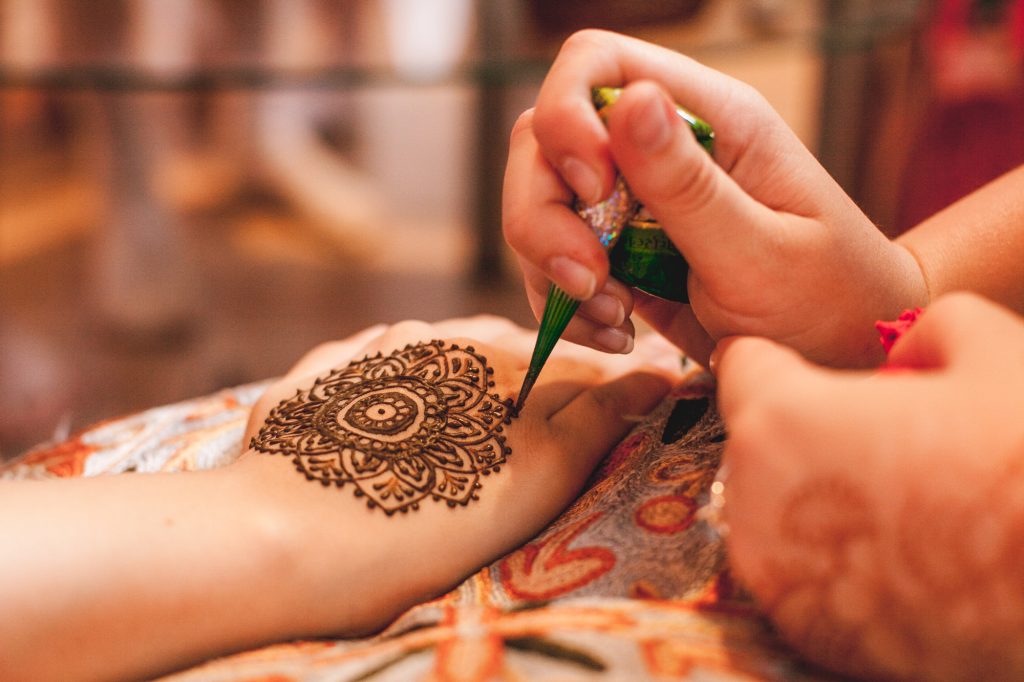What happens when a person’s skin condition occurs from their religious or cultural practice?
This type of skin reaction is called devotional dermatosis, and its treatment can be incredibly difficult. In these situations, dermatologists must balance our ethical obligation to treat the patient’s medical condition, while also ensuring that we remain culturally sensitive and avoid “blaming” the patient for their condition.
One of the most common reasons for patients to seek dermatologic care is for treatment of an allergic reaction to the skin. This condition—known as allergic contact dermatitis—can have many triggers, including poison ivy, household creams like Neosporin, and fragrances. Typically, once a dermatologist performs allergy testing and can isolate the compound responsible for the rash, the next step involves educating patients about the cause and suggesting behavioral modification to avoid getting the same reaction. For example, if a patient is getting a rash from using scented soaps, we can recommend various fragrance-free products that will not elicit the same reaction. However, behavioral modification can be challenging if the rash is occurring from a religious or cultural practice.
Recently, I worked with an interfaith group of doctors, including practitioners of Islam, Hinduism, and Judaism, from various medical training levels to investigate this issue. After searching the medical literature for examples of devotional dermatoses, we found examples in many religious traditions. Our next step involved suggesting treatments that would respect the patient’s religious or cultural sensitivity.
In our study, the most common devotional dermatosis occurred from henna tattoos, a cultural practice common in a wide variety of traditions. We learned that the henna plant itself is not responsible for any allergic reactions; rather, it is the para-phenylenediamine (PPD) dye used to darken the color that causes dermatitis. Therefore, if patients experience dermatitis from henna tattoos, they do not need to stop applying henna. They can simply look for henna that is free of PPD.

Another devotional dermatosis well-described in medical literature occurs from the use of tefillin in Judaism. Tefillin are sets of black leather boxes with straps that contain small parchments inscribed with a verse of the Torah and worn by many Jews during certain prayers. Unfortunately, patients may develop allergies to the leather straps or boxes and find wearing the tefillin uncomfortable. Many Jews believe wearing tefillin wrapped with leather to be obligatory and may not stop wearing them even if they have allergic reactions. Fortunately, there are treatments that can help Jewish patients maintain their traditions while reducing their dermatitis.
For example, allergy testing can help isolate the specific component of leather that causes the rash (potassium dichromate in most cases), and patients can seek leather products that are free of this allergen. Alternatively, some doctors report that coating the leather straps with vegetable oil prior to wrapping them on the skin can also reduce the dermatitis.

There were several other devotional dermatoses described in the literature. However, one of our main conclusions was that this phenomenon is under-reported. Physicians may not ask patients about religious or cultural practices when attempting to determine the cause of allergic reactions for a variety of reasons; to avoid offending the patient or “blaming” them for their disease, or because they do not know enough about cases of devotional dermatosis to consider this diagnosis.
I was extremely fortunate to work with a diverse group of doctors in this research; despite this, in our study, we found little literature on Sikhism and Buddhism, even though these are some of the most-practiced religions in the world. I look forward to discussing this research at the World Congress of Dermatology in Singapore this upcoming July, and ideally partnering with an even more diverse group of dermatologists.
I am eager to engage in discussions with colleagues from dermatology and other specialties regarding the most effective approaches to delivering patient-centered and culturally sensitive healthcare.

Aamir Hussain is a dermatology resident physician practicing in the DC Metro Area. Aamir holds an MD and Master of Arts in Public Policy from the University of Chicago. He is a practicing Muslim who has been involved with interfaith activism since his undergraduate studies at Georgetown University. Aamir served on the front lines of the New York City coronavirus pandemic in March 2020 and has received several interfaith leadership grants to mentor students from underrepresented backgrounds in medicine. His interests are in medical education, health policy, and in the intersections between spirituality and healthcare. You can follow him on Twitter: @AamirNHussain or Instagram: @the_pun_isher_md.




